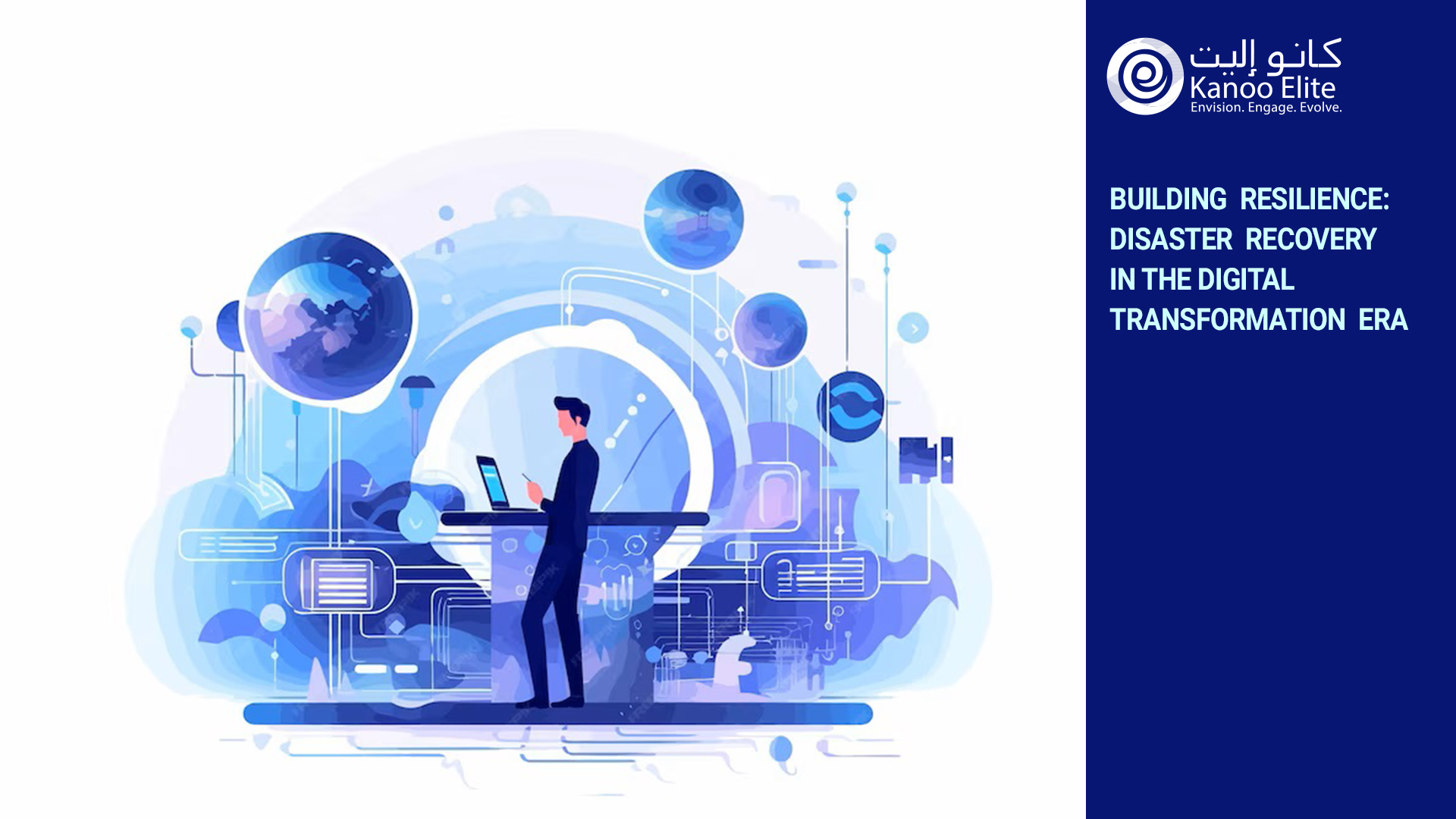Rethinking digital twin: Introducing digital risk twin for disaster risk management – Nature

Report on the Digital Risk Twin (DRT) for Enhanced Disaster Risk Management and Achievement of Sustainable Development Goals
Executive Summary
The Digital Risk Twin (DRT) is a specialized adaptation of Digital Twin (DT) technology tailored for Disaster Risk Management (DRM). It addresses the limitations of conventional DTs by integrating both automated (e.g., IoT, remote sensing) and manual (e.g., surveys, field observations) data collection methods. Crucially, the DRT framework incorporates a human-in-the-loop decision-making process, enabling flexible and context-sensitive interventions. This approach is vital for managing complex disaster scenarios and directly supports the achievement of several Sustainable Development Goals (SDGs), particularly those focused on building resilient infrastructure, creating sustainable communities, and taking urgent action to combat climate change.
1. Introduction: The Rising Challenge of Disasters and the SDG Imperative
The escalating frequency and intensity of natural disasters, exacerbated by climate change, urbanization, and environmental degradation, pose a significant threat to global resilience and the progress of the 2030 Agenda for Sustainable Development. Effective disaster management is no longer merely a humanitarian issue but a core component of sustainable development. Traditional approaches are often insufficient for the dynamic and complex nature of modern crises. This report introduces the Digital Risk Twin (DRT) as an advanced technological framework designed to enhance DRM. By providing a holistic, multi-dimensional tool for prediction, preparedness, and response, the DRT offers a pathway to strengthen resilience and advance key SDGs.
2. The Digital Risk Twin (DRT) Concept
The DRT evolves from Digital Twin (DT) and Digital Shadow (DS) concepts but is uniquely designed for the unpredictable and often low-tech environments of disaster zones. It bridges the gap between fully automated systems and passive analytical models.
2.1. Differentiating DRT from DT and DS
- Digital Twin (DT): A virtual replica with bidirectional, automated data flow and control, enabling real-time simulation and optimization. Its reliance on full automation limits its use in disrupted disaster environments.
- Digital Shadow (DS): A simpler virtual model with unidirectional data flow, used for passive monitoring and analysis without automated feedback.
- Digital Risk Twin (DRT): A hybrid model that provides the simulation capabilities of a DT but allows for flexible data inputs and human-mediated interventions. It is a middle ground, providing real-time insights while empowering human decision-makers, which is critical for achieving sustainable and equitable outcomes (SDG 10, SDG 16).
2.2. Key Features of the Digital Risk Twin
- Flexible and Scalable Data Collection: DRTs integrate automated data from IoT sensors and remote sensing with manual inputs like field surveys and community reports. This hybrid approach ensures a comprehensive understanding of physical, social, economic, and environmental factors, which is essential for building sustainable and inclusive communities (SDG 11).
- Human-in-the-Loop Decision-Making: Insights from the DRT are not automatically implemented. Instead, they inform government agencies, emergency responders, and community leaders, who make context-aware decisions. This ensures that interventions are appropriate, equitable, and effective.
- Real-Time, Context-Sensitive Adaptation: The DRT continuously updates with new data, allowing for dynamic adaptation to evolving disaster scenarios. This agility is crucial for protecting lives and infrastructure (SDG 3, SDG 9).
3. DRT Alignment with the Sustainable Development Goals (SDGs)
The DRT framework is a powerful enabler for the 2030 Agenda, contributing directly to multiple goals by building systemic resilience.
3.1. SDG 11: Sustainable Cities and Communities
DRTs are instrumental in making human settlements inclusive, safe, resilient, and sustainable.
- Target 11.5: By significantly reducing the number of deaths and economic losses from disasters, DRTs help protect vulnerable populations.
- Target 11.B: The framework supports the implementation of integrated policies for inclusion, resource efficiency, and disaster risk reduction. Scenario modeling allows for better urban planning and resource prepositioning.
3.2. SDG 13: Climate Action
As climate change intensifies natural hazards, DRTs provide critical tools for adaptation and resilience.
- Target 13.1: Strengthens resilience and adaptive capacity to climate-related hazards by improving early warning systems, risk assessments, and response strategies.
- Target 13.3: Improves education and institutional capacity on climate change mitigation, adaptation, and early warning through data-driven insights and simulations.
3.3. SDG 9: Industry, Innovation, and Infrastructure
DRTs support the development of resilient infrastructure and foster innovation.
- Target 9.1: Facilitates the development of quality, reliable, and resilient infrastructure by modeling structural vulnerabilities and cascading failures, enabling preemptive retrofitting and optimized recovery plans.
- Target 9.A: Supports technological upgrading and innovation in developing countries by providing a scalable framework for advanced disaster management.
3.4. Other Key SDG Contributions
- SDG 1 (No Poverty) & SDG 10 (Reduced Inequalities): By enabling targeted interventions, DRTs help protect the most vulnerable communities who are disproportionately affected by disasters.
- SDG 3 (Good Health and Well-being): Optimizes emergency medical response, resource allocation to healthcare facilities, and evacuation routes to save lives.
- SDG 17 (Partnerships for the Goals): The implementation of DRTs necessitates multi-stakeholder collaboration between governments, the private sector, academia, and civil society.
4. Applications of DRT Across the Disaster Management Cycle
DRTs offer practical applications that enhance sustainability and resilience at every stage of a disaster.
- Preparedness: Near real-time risk assessment and scenario modeling improve land-use planning and resource prepositioning, contributing to more sustainable urban development (SDG 11).
- Early Warning: Integration of diverse datasets (climatic, social, infrastructural) enhances the accuracy of predictions, allowing for timely and actionable warnings that protect lives and livelihoods (SDG 13).
- Response: Dynamic optimization of resource allocation, search-and-rescue operations, and logistics ensures that aid is delivered efficiently and equitably (SDG 10).
- Recovery: Post-disaster analysis helps identify systemic vulnerabilities and informs “build back better” strategies, enhancing long-term resilience and sustainable reconstruction (SDG 9).
- Resilience Building: Continuous risk modeling and vulnerability assessments guide adaptive actions, enabling communities and systems to evolve in response to changing risks.
5. Case Study: DRT for Earthquake-Based Multi-Hazard Response
A hypothetical scenario based on the 2023 Kahramanmaraş earthquakes illustrates the DRT’s value in a complex crisis where conventional systems fail, directly impacting progress towards the SDGs.
5.1. Scenario: The Physical Twin
A major earthquake strikes a mountainous urban region, causing structural collapses, landslides, and cascading failures of power, water, and communication infrastructure. This fragmentation makes purely automated monitoring impossible and threatens community safety and well-being (SDG 3, SDG 11).
5.2. DRT Implementation: Hybrid Data and Human-in-the-Loop Action
- Data Collection: The DRT integrates patchy automated sensor data with manual inputs. Field reports from engineers, community-sourced data via offline apps, and remote sensing imagery from UAVs are combined to create a comprehensive situational overview.
- Modelling: Agent-based models simulate evacuation flows and shelter needs, while infrastructure models assess structural integrity and forecast secondary hazards. These models inform decision-makers rather than triggering automated responses.
- Decision-Making: Insights are relayed to emergency coordination centers. Local authorities use this information to guide search-and-rescue, prioritize relief logistics, and issue context-sensitive public alerts. This process ensures that actions are adapted to real-world conditions and community needs, fostering an inclusive response (SDG 10).
5.3. Outcomes for Sustainable Resilience
The DRT’s hybrid approach ensures operational resilience even with degraded infrastructure. It facilitates cross-sectoral coordination and empowers local actors, building capacity and ensuring that response efforts contribute to long-term sustainable recovery (SDG 9, SDG 11, SDG 17).
6. Challenges and Future Considerations for Sustainable Implementation
The widespread adoption of DRTs faces several challenges that must be addressed to ensure they contribute effectively to the SDGs.
- Technical and Resource Barriers: High computational demands and the need for significant investment in infrastructure and skilled personnel can hinder deployment, particularly in developing nations. This highlights the need for international cooperation and capacity building (SDG 17).
- Ethical and Data Governance Concerns: Privacy and data security issues require robust ethical frameworks and standards to ensure that data is used responsibly and does not exacerbate inequalities (SDG 16).
- Data Limitations: The reliance on a mix of real-time and historical data, as well as manual and automated collection, requires sophisticated integration techniques. Ensuring data quality and reliability in chaotic situations remains a key challenge.
7. Conclusion
The Digital Risk Twin (DRT) represents a significant evolution in disaster risk management technology. By blending advanced simulation with flexible data integration and human-centric decision-making, it offers a pragmatic and powerful tool for navigating the complexities of modern disasters. Its inherent design promotes resilience, adaptability, and inclusivity, making it a critical enabler for achieving the Sustainable Development Goals. Investing in the development and equitable deployment of DRTs is an investment in a safer, more resilient, and sustainable future for all.
1. Which SDGs are addressed or connected to the issues highlighted in the article?
SDG 9: Industry, Innovation and Infrastructure
The article focuses on developing an innovative technological solution (Digital Risk Twin) to enhance the resilience of infrastructure against disasters. It discusses the application of DRTs in managing “cascading failures in power, water, and communication infrastructure” and assessing “structural damage” and “road accessibility.” This directly relates to building resilient infrastructure through innovation.
SDG 11: Sustainable Cities and Communities
The core theme of the article is making human settlements, particularly urban areas, safer and more resilient. The DRT is presented as a tool for “Disaster Risk Management (DRM)” in cities, as exemplified by the case study of an “earthquake striking a mountainous urban region.” The goal is to reduce the impact of disasters on populations, especially “vulnerable populations,” and to implement “holistic disaster risk management,” which aligns with making cities sustainable and resilient.
SDG 13: Climate Action
The article explicitly links the need for advanced disaster management tools to climate change. It opens by stating that “Natural hazard-induced disasters are escalating in frequency and intensity due to climate change.” The DRT framework is designed to strengthen “resilience and adaptive capacity to climate-related hazards and natural disasters” by improving preparedness, early warning, and response.
SDG 17: Partnerships for the Goals
The article emphasizes that the DRT framework relies on collaboration among various actors. It highlights the need for “interdisciplinary collaboration,” “private sector partnerships,” and the integration of data from and coordination between “governments, emergency response teams, local authorities, and community leaders.” This multi-stakeholder approach is central to achieving the goals discussed and reflects the spirit of SDG 17.
2. What specific targets under those SDGs can be identified based on the article’s content?
SDG 9: Industry, Innovation and Infrastructure
- Target 9.1: Develop quality, reliable, sustainable and resilient infrastructure.
The article directly addresses this target by proposing the DRT as a system to manage and improve the resilience of critical infrastructure. The case study details how DRTs can be used to monitor and respond to “cascading failures in power, water, and communication infrastructure” and assess “structural integrity” and “road accessibility” following a disaster.
- Target 9.a: Facilitate sustainable and resilient infrastructure development in developing countries.
The article’s illustrative case study is “inspired by real-world events such as the 2023 Kahramanmaraş earthquakes in Türkiye,” a scenario in a developing country. The DRT concept is presented as a flexible framework adaptable to environments where “digital infrastructure is partially degraded or not fully available,” making it relevant for facilitating resilient infrastructure management in such contexts.
SDG 11: Sustainable Cities and Communities
- Target 11.5: By 2030, significantly reduce the number of deaths and the number of people affected and substantially decrease the direct economic losses relative to global gross domestic product caused by disasters… with a focus on protecting the poor and people in vulnerable situations.
The entire purpose of the DRT for Disaster Risk Management (DRM) is to mitigate the adverse effects of disasters. The article mentions its use in coordinating “evacuation plans,” dispatching “rescue teams,” and managing response for “tens of thousands of people displaced, many from vulnerable populations.” By improving response and preparedness, the DRT aims to reduce human and economic losses.
- Target 11.b: …substantially increase the number of cities and human settlements adopting and implementing integrated policies and plans towards… resilience to disasters, and develop and implement… holistic disaster risk management at all levels.
The DRT is described as a tool for “holistic disaster risk management” that integrates “physical, environmental, social, economic, and institutional factors.” Its applications include “preparedness,” “response,” “recovery,” and “resilience building,” which are all components of an integrated disaster management plan.
SDG 13: Climate Action
- Target 13.1: Strengthen resilience and adaptive capacity to climate-related hazards and natural disasters in all countries.
The article’s introduction establishes that disasters are worsening due to “climate change.” The DRT is proposed as a solution to “ultimately enhancing resilience in the face of such events.” It achieves this by enabling “real-time, context-sensitive adaptation” and guiding “adaptive and transformative actions” in response to evolving risks.
- Target 13.3: Improve education, awareness-raising and human and institutional capacity on climate change… impact reduction and early warning.
A key application of DRTs mentioned is to “enhance early warning systems by integrating diverse datasets for accurate predictions and delivering actionable insights to responders and communities.” This directly contributes to building institutional capacity for early warning and disaster impact reduction.
SDG 17: Partnerships for the Goals
- Target 17.16 & 17.17: Enhance the Global Partnership for Sustainable Development, complemented by multi-stakeholder partnerships… Encourage and promote effective public, public-private and civil society partnerships.
The article stresses that DRT implementation requires “interdisciplinary collaboration and supportive policy frameworks,” including “government funding along with private sector partnerships.” The operational model of a DRT involves data sharing and decision-making among “diverse stakeholders,” including “governments, emergency response teams,” “NGOs,” and “coordinated community networks,” which exemplifies a multi-stakeholder partnership in action.
3. Are there any indicators mentioned or implied in the article that can be used to measure progress towards the identified targets?
Indicators for SDG 9 (Industry, Innovation and Infrastructure)
- Status of Critical Infrastructure: The article implies that progress can be measured by monitoring data on “structural damage, road accessibility, and utility service disruptions.” A resilient system would show minimal disruption or rapid restoration, which a DRT is designed to track.
Indicators for SDG 11 (Sustainable Cities and Communities)
- Number of People Affected: The DRT system is designed to process community-level data, including reports on “injuries, shelter needs, and missing persons.” Tracking these numbers provides a direct indicator of the human impact of a disaster.
- Implementation of Holistic DRM Plans: The adoption and use of “DRT-based continuous risk modelling, vulnerability assessment, and resilience evaluation” can serve as a qualitative indicator that a city is implementing an integrated and holistic disaster risk management plan.
Indicators for SDG 13 (Climate Action)
- Effectiveness of Early Warning Systems: Progress can be measured by the “accuracy of predictions” generated by the DRT and the successful delivery of “actionable insights to responders and communities,” potentially measured by reduced response times or more effective evacuations.
- Adaptive Capacity: The ability of the DRT to perform “(Near) real-time risk assessment and scenario modelling” provides a measure of a community’s adaptive capacity, as it allows decision-makers to anticipate and plan for various outcomes.
Indicators for SDG 17 (Partnerships for the Goals)
- Level of Stakeholder Integration: The number and diversity of data streams integrated into the DRT from “multiple stakeholders and sectors” (e.g., government, NGOs, community reports, private sensors) can serve as an indicator of the effectiveness of multi-stakeholder partnerships.
4. Create a table with three columns titled ‘SDGs, Targets and Indicators’ to present the findings from analyzing the article.
| SDGs | Targets | Indicators |
|---|---|---|
| SDG 9: Industry, Innovation and Infrastructure | 9.1: Develop quality, reliable, sustainable and resilient infrastructure. | Data on the status of infrastructure, including “structural damage, road accessibility, and utility service disruptions.” |
| SDG 11: Sustainable Cities and Communities | 11.5: Significantly reduce the number of deaths and people affected by disasters. 11.b: Implement holistic disaster risk management plans. |
Real-time data on “injuries, shelter needs, and missing persons.” Adoption of “DRT-based continuous risk modelling, vulnerability assessment, and resilience evaluation.” |
| SDG 13: Climate Action | 13.1: Strengthen resilience and adaptive capacity to climate-related hazards. 13.3: Improve human and institutional capacity for early warning. |
Outputs from “(Near) real-time risk assessment and scenario modelling.” “Accuracy of predictions” and delivery of “actionable insights” from early warning systems. |
| SDG 17: Partnerships for the Goals | 17.16 & 17.17: Enhance multi-stakeholder partnerships for sustainable development. | Number and diversity of integrated data sources from “multiple stakeholders and sectors” (governments, NGOs, community networks). |
Source: nature.com

What is Your Reaction?
 Like
0
Like
0
 Dislike
0
Dislike
0
 Love
0
Love
0
 Funny
0
Funny
0
 Angry
0
Angry
0
 Sad
0
Sad
0
 Wow
0
Wow
0



























;Resize=805#)


















































